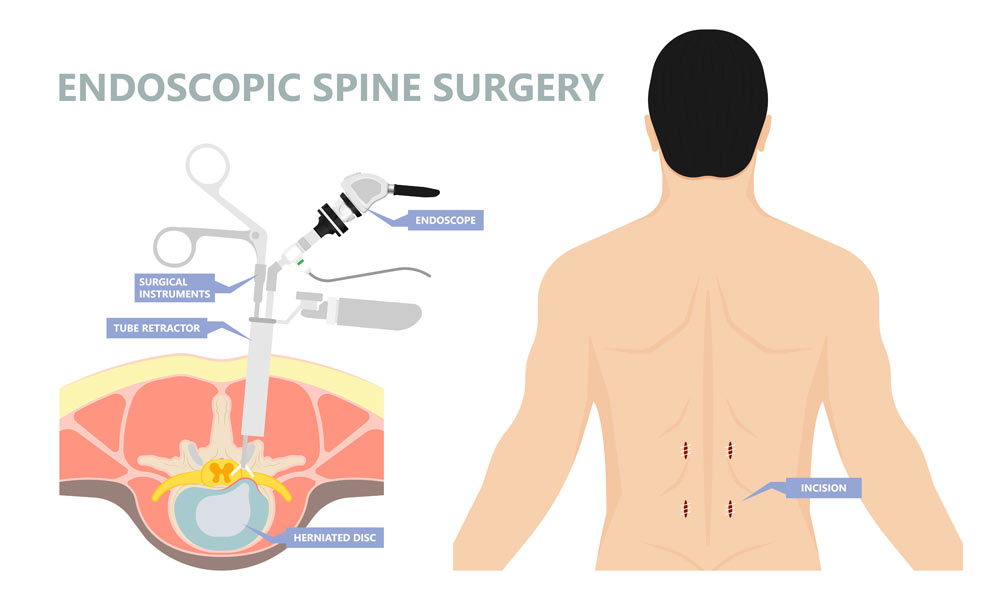Discectomies aim to remove damaged or infected intervertebral discs to help relieve pressure along the spine, its nerves and reduce pain throughout the lower region of the back. This form of spinal surgery is combined with other surgeries, such as spinal fusions, to provide complete repair of the spine’s vertebrae. Minimally invasive techniques are used as a form of disc removal to reduce the signs of scarring, decrease the amount of muscle and nerve damage, and produce a quicker recovery.

Why Do Surgeons Perform Discetomies?
Discs are spongy, cartilage structures throughout the spine’s vertebrae that protect the bones from causing irritations to the muscles, nerves, and other surrounding tissues that support the back. When those discs are infected or damaged, discectomies help to remove the disc entirely or remove the disc partially for several reasons. When a disc is left in the spine damaged, the discs can cause problems walking, pain radiating throughout the hips, thighs, and legs, and conservative treatments don’t work. Conditions that may require a discectomy include:
- Herniated Disc: When the disc prolapses outside of the spinal column structure, it causes nerve inflammation and pain radiating throughout the lumbar region of the spine.
- Degenerative Disc Disease: This disease causes the discs to degenerate over time, losing their ability to withhold moisture and tissue inside the disc.
- Spondylolisthesis: The lower vertebrae slips forward, causing the bones to directly touch, causing inflammation in the discs, nerve pain, and back pain.
For patients requiring a discectomy, minimally invasive procedures can provide smaller incisions to the lumbar section of the spine, reducing the chance of reducing nerve compression caused by the damaged disc. Accessing the site through minimally invasive techniques can also reduce the chance of injuring muscles, tendons, and ligaments surrounding the lower back region that generally would be cut during an open spine surgery procedure. This surgery can be performed alongside other surgeries, specifically:
- Spinal Fusion
- Posterior Lumbar Spinal Fusion
- Anterior Lumbar Spinal Fusion
- Lumbar Interbody Fusion
How is a Discectomy Performed?
Under the guidance of a surgeon, the procedure for a discectomy performs as follows:
- Once the patient is prepared with general anesthesia, a small incision under 3 cm long is made along the lower back while the surgeon separates the muscles to access the surgical area
- A retractor is placed to allow the muscles to be separated, giving the surgeon access to perform on the site.
- Through this retractor, portions of the lamina bone that covers the posterior wall of the spine are removed to further expose the spinal cord area.
- Once the surgeon reaches the spinal cord area, the removal of the lamina decompresses the source.
- If herniated or damaged discs are present, then the discs will be surgically removed through minimally invasive procedures.
- Once removed, the surgeon will perform other procedures to repair the spinal column or close the area to allow the spine to adjust.
After surgery, rehabilitation plans for recovery will be in place to help track signs of blood clots, nerve damage, bladder problems, and other conditions that could occur from the discectomy. Please visit Dr. John Czerwein’s office in North Scituate, RI, to schedule an appointment for more information.

